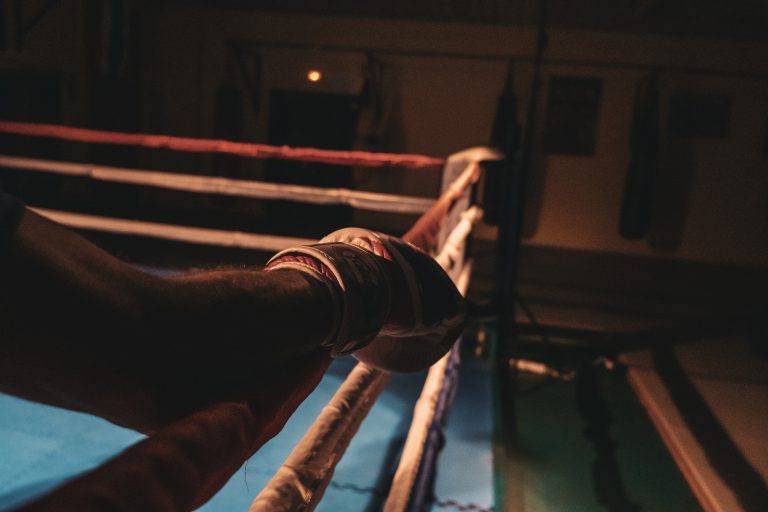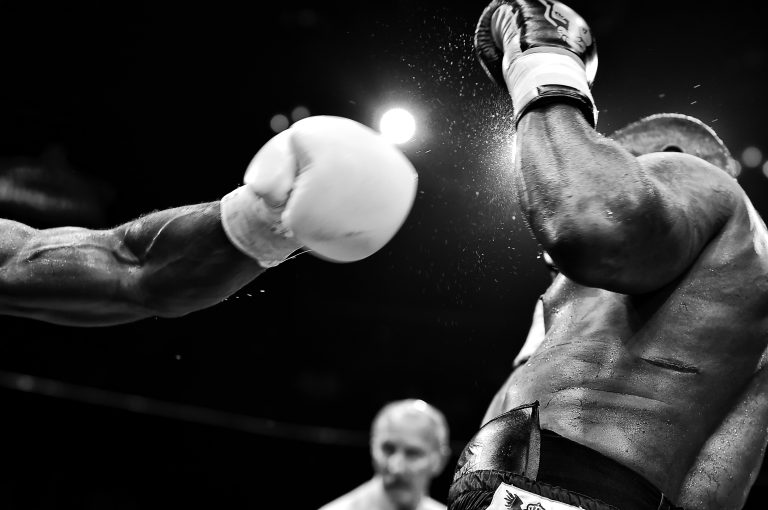Rules and Regulations of Karate: Understanding the Etiquettes of the Martial Art
Karate is a popular form of martial art characterized by its unique techniques of attack, defense, and counterattack. It has gained worldwide recognition as a highly competitive sport and an effective self-defense mechanism. Although karate is a Japanese martial art, it has its own universal set of rules and regulations that must be followed. These rules and regulations are meant to promote discipline, respect, and safety among practitioners. In this blog post, we’ll delve into the rules and regulations of karate to help you understand the etiquettes of the martial art.
The Basics of Karate
Before we delve into the rules and regulations of karate, it’s essential to understand the fundamental principles of the martial art. The word „karate“ means „empty hand“ in Japanese, which is a clear indication that karate practitioners use their hands and feet to perform techniques. Karate is a striking martial art that focuses on punching, kicking, knee strikes, and elbow strikes. It’s also characterized by its many blocks, throws, and joint locks.
Karate has two primary categories: kumite (sparring) and kata (forms). In kumite, practitioners engage in controlled yet intense sparring matches, while kata is focused on executing a series of predetermined techniques in a choreographed sequence. Both kumite and kata are essential to the development of a karate practitioner, and they require strict adherence to the rules and regulations set forth by the martial art.
The Rules and Regulations of Karate
Karate has several rules and regulations that must be followed to promote safety, respect, and discipline among practitioners. Below are some of the most important rules and regulations of karate:
Bowing in and out of the Dojo
The dojo is a sacred place where practitioners gather to learn and practice karate. As such, it’s essential to show respect and appreciation for the area by bowing in and out of the dojo before and after training sessions. This bowing ritual is meant to symbolize respect for the art, respect for the teacher, and respect for fellow practitioners.
Etiquette during Training Sessions
During training sessions, practitioners must adhere to several rules and regulations to ensure a safe and productive environment. One important rule is to remain quiet and focused during training. This means no talking or horseplay during class. Also, practitioners must address their instructor as „sensei“ with respect and follow instructions promptly. Additionally, practitioners must wear clean, appropriate uniforms during training sessions.
Sparring Regulations
Karate sparring matches (kumite) require strict adherence to several rules and regulations to promote safety and ensure fairness. Below are some of the regulations that apply to kumite:
– Practitioners must wear appropriate sparring gear, including headgear, gloves, shin guards, and mouthguards.
– The use of full contact techniques is not allowed during sparring. Instead, practitioners must use light to medium contact techniques.
– Practitioners must show respect for their opponents before and after the matches by bowing to each other.
Kata Regulations
Kata is the other primary category of karate, and it requires the practitioner to execute a predetermined sequence of techniques. There are many kata in karate, and each one has its own set of regulations. Some of the rules that apply to kata include:
– The practitioner must show understanding of the techniques and their applications by performing them correctly.
– The practitioner must demonstrate control and precision in executing the techniques.
– The practitioner must show respect for the art and their fellow practitioners by bowing before and after kata demonstrations.
Rules and Regulations of Karate: Commonly Asked Questions
Karate is a martial art that originated in Japan and has become popular worldwide. It is a great way to develop physical fitness, mental acuity, and self-defense skills. Like any other sport or martial art, karate has rules and regulations that practitioners must observe. Here are some frequently asked questions about the rules and regulations of karate:
What is the objective of karate?
The primary objective of karate is to develop your physical and mental abilities to the fullest extent possible. This means developing strength, speed, agility, and stamina, as well as improving your concentration, focus, self-discipline, and self-confidence. In competitions, the objective is to score points by striking your opponent with legal techniques while avoiding being hit by your opponent.
What are some basic rules of karate?
There are many rules of karate, but some of the most basic ones include:
– Always show respect to your instructors, fellow students, and opponents
– Practice good sportsmanship and abide by the rules of fair play
– Wear appropriate karate uniform (gi) during training and competitions
– Keep your gi and training area clean and tidy
– Do not use karate for aggression or violence outside of training and competition settings
– Do not use illegal techniques that can cause injuries to your opponents, such as strikes to the throat, eyes, or groin
What is the scoring system in karate?
The scoring system in karate varies depending on the organization or federation that governs the competition. In general, points are awarded for legal strikes to specific target areas of the body, such as the head, chest, and abdomen. Points are also deducted for illegal strikes, fouls, or violations of the rules.
What are some common fouls in karate?
Some common fouls in karate include:
– Striking to illegal target areas, such as the throat, eyes, or groin
– Using excessive force in strikes or kicks
– Grabbing, pulling, or pushing your opponent
– Attacking your opponent while they are down or out of bounds
– Refusing to follow the referee’s commands or stopping the match prematurely
What is the role of the referee in karate competitions?
The role of the referee in karate competitions is to ensure that the rules are followed and to make decisions about scoring, fouls, or other issues that may arise during the match. The referee also ensures the safety of the participants and may stop the match if they deem it necessary.
What are kata and kumite in karate?
Kata is a series of prearranged movements and techniques performed solo, while kumite is sparring or fighting against an opponent. Both kata and kumite are important components of karate training and competition. Kata helps practitioners develop technique, balance, and precision, while kumite helps them develop strategy, timing, and adaptability.
What are the different levels or ranks in karate?
Most karate organizations use a system of colored belts or sashes to indicate the level of proficiency and experience of a practitioner. The order of belt colors and requirements for promotion vary depending on the organization, but typically include white, yellow, orange, green, blue, brown, and black. Black belt ranks are usually divided into degrees or dans, with higher degrees indicating greater mastery of the art.
In conclusion, karate is a martial art that demands respect, discipline, and adherence to its rules and regulations. Practicing karate according to these rules can help you develop not only physical fitness and self-defense skills but also mental clarity and self-confidence. Whether you are a beginner or an advanced practitioner, it is essential to follow the rules and stay committed to your training to achieve the full benefits of karate.
How to Understand the Rules and Regulations of Karate
Karate is a physical discipline that demands more than physical prowess from those who practice it. Karate also requires an understanding of the rules and regulations that govern the sport. In this guide, we will go through the essential rules and regulations of karate, and hopefully, by the end, you’ll have a better understanding of the sport. Before we dive in, it’s important to note that the rules and regulations of karate may differ slightly depending on the tournament, association, or governing body.
Step 1: Know the Scoring System of Karate
The scoring system is crucial to understanding the rules and regulations of karate. A karate competition comprises three rounds, each lasting two minutes. Each round will have a „kagami biraki“ or „opening ceremony,“ where competitors bow to the judges, their opponents, and the audience.
The scoring system is based on points for strikes to different areas of the body. Strikes to the head and torso are worth more points than those to the arms and legs. The number of points awarded for each strike is determined by the technique used and the part of the body targeted.
Step 2: Learn the Fouls in Karate
Like with any sport, karate has fouls that competitors must avoid at all costs. Here are some of the fouls that are grounds for disqualification:
– Striking below the belt or the back of the head
– Attacking while out of bounds
– Using a technique that is prohibited by the rules
– Engaging in unsportsmanlike conduct like taunting or arguing
Step 3: Understand the Penalties in Karate
Penalties are given to competitors who commit fouls or other violations. Here are some of the penalties that a competitor may receive:
– Warning: A warning is given for minor offenses like stepping out of bounds or not following orders.
– Keikoku: This penalty is awarded for second offenses, and competitors lose one point.
– Hansoku: This penalty results in disqualification. A competitor may receive a Hansoku for committing a severe offence or for receiving a third Keikoku.
Step 4: Review the Techniques Allowed in Karate
Karate has a list of allowed techniques that competitors can use in a fight. Some of the techniques that are allowed include punches, kicks, and knee strikes. However, some techniques are not allowed and may lead to a disqualification. Attacking with the elbow or throwing techniques are examples of prohibited techniques.
Step 5: Get Familiar with Karate Equipment
To keep competitors safe, there is specific equipment required in karate tournaments. Competitors are equipped with gloves and protective gear like shin and foot protectors. The gear should be approved by the tournament officials and should be in good condition.
Step 6: Know the Different Karate Weight Classes
Karate tournaments are divided into weight classes. Competitors are grouped according to their weight, and this ensures that they face someone with the same physical capabilities as themselves. Here are some of the different karate weight classes.
– Lightweight: Under 67 kg
– Middleweight: From 67 kg to 84 kg
– Heavyweight: Over 84 kg
Step 7: Follow Proper Sportsmanship in Karate
Sportsmanship is an essential aspect of karate. Competitors are expected to show respect to their judges, their opponents, and the audience. Competitors should shake hands with their opponent before and after the match. They should also bow when entering and leaving the mat.
Conclusion
Karate is a sport that requires discipline, skill, and knowledge of its rules and regulations. This guide has provided you with an overview of the critical rules and regulations that govern the sport of karate. Understanding these rules and regulations can take time, but it’s important to continue practicing and learning to excel in karate.
Resources:
– World Karate Federation
– The Karate Kid
Inhaltsverzeichnis






